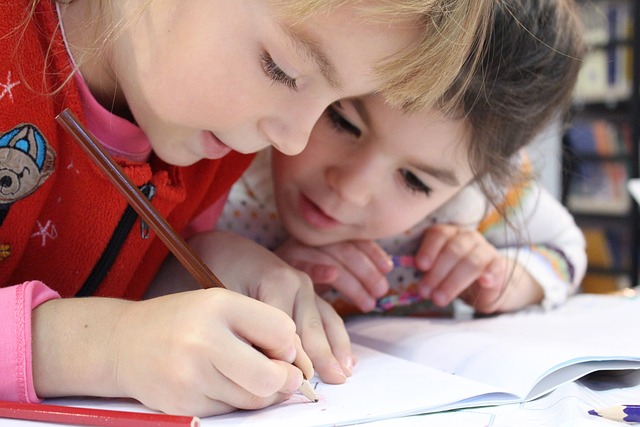Understanding YouTube’s Algorithm: How It Works
YouTube’s algorithm is a complex system that determines which videos are recommended to users based on their viewing history, preferences, and engagement patterns. It takes into account various factors such as the number of views, likes, comments, and shares a video receives. Additionally, it considers how long viewers watch a particular video and whether they click on other videos suggested by the algorithm.
One key aspect of YouTube’s algorithm is its ability to personalize recommendations for each user. By analyzing data from millions of users worldwide, the algorithm can understand individual preferences and tailor content suggestions accordingly. This personalization aims to keep users engaged by presenting them with videos they are likely to enjoy or find interesting.
However, there have been concerns about the impact of YouTube’s algorithm on children. The personalized recommendations may expose young viewers to inappropriate or harmful content if not properly regulated. Parents should be aware that while YouTube has implemented measures like age restrictions and restricted mode filters, these tools are not foolproof and may still allow some unsuitable content through.
Overall, understanding how YouTube’s algorithm works is crucial in navigating the platform safely and effectively. By being aware of its mechanisms for recommendation and personalization, users can make informed choices about what they watch while also taking advantage of features like parental controls to ensure a safer experience for themselves or their children.
The Impact of YouTube’s Algorithm on Children
YouTube’s algorithm has a significant impact on children, shaping their online experiences and influencing the content they consume. The algorithm is designed to recommend videos based on a user’s viewing history and preferences, which can lead to a filter bubble effect where children are exposed to similar types of content over time. This can limit their exposure to diverse perspectives and potentially reinforce biases or stereotypes.
Moreover, the algorithm tends to prioritize engagement metrics such as watch time and click-through rates when suggesting videos for children. While this may seem harmless at first glance, it can inadvertently expose them to inappropriate or harmful content that garners high engagement. For instance, if a child watches a video with misleading thumbnails or titles that pique curiosity but contain unsuitable material, the algorithm may continue recommending similar content without considering its appropriateness.
The constant exposure to certain types of videos driven by YouTube’s algorithm can also contribute to addictive behaviors in children. As they become accustomed to consuming specific genres or themes consistently recommended by the platform, it becomes increasingly difficult for them to explore other interests outside of these predetermined choices. This narrowing of their online experience could hinder their personal growth and limit their exposure to new ideas and perspectives.
In essence, while YouTube’s algorithm offers personalized recommendations tailored towards individual users’ preferences, it is crucial for parents and caregivers alike to be aware of its potential impact on children. By understanding how the algorithm works and actively monitoring the content being consumed by young viewers, we can help ensure that they have access not only safe but also diverse and enriching experiences on YouTube
Identifying Inappropriate Content on YouTube
One of the challenges parents face when it comes to YouTube is identifying inappropriate content. With millions of videos being uploaded every day, it can be difficult to ensure that your child is not exposed to harmful or unsuitable material. However, there are some steps you can take to help identify and prevent access to such content.
Firstly, familiarize yourself with the types of content that may be considered inappropriate for children. This includes explicit language, violence, sexual content, and hate speech. By understanding what constitutes as inappropriate content, you will be better equipped to recognize it if your child stumbles upon it while browsing YouTube.
Secondly, utilize the reporting feature on YouTube. If you come across a video that you believe contains inappropriate content or violates community guidelines, report it immediately. Reporting helps flag these videos for review by YouTube’s moderation team who will assess its suitability and take appropriate action if necessary.
Lastly, consider using third-party tools and browser extensions specifically designed for parental control on YouTube. These tools allow you to set restrictions on the type of content your child can access based on age appropriateness or specific keywords. They also provide options for blocking certain channels or individual videos known for containing inappropriate material.
By following these steps and remaining vigilant in monitoring your child’s activity on YouTube, you can significantly reduce their exposure to inappropriate content and create a safer online environment for them.
The Role of Parental Controls in YouTube Safety
Parental controls play a crucial role in ensuring the safety of children on YouTube. These controls allow parents to have more control over what their children can access and view on the platform. By setting up parental controls, parents can filter out inappropriate content, limit screen time, and even restrict certain features or channels.
One key benefit of parental controls is the ability to filter out inappropriate content on YouTube. Parents can use these settings to block or hide videos that contain explicit language, violence, or other adult themes. This helps create a safer browsing experience for children and reduces the risk of exposure to harmful or age-inappropriate material.
In addition to filtering content, parental controls also enable parents to set limits on screen time. They can specify how much time their child is allowed to spend watching videos on YouTube each day or during certain hours. This feature helps promote healthy digital habits and prevents excessive consumption of online content.
By utilizing parental controls on YouTube, parents are taking an active role in protecting their children’s online safety. It provides them with peace of mind knowing that they have implemented measures to minimize potential risks and ensure a safer browsing experience for their kids.
Setting Up Parental Controls on YouTube
One way to ensure your child’s safety while using YouTube is by setting up parental controls. These controls allow you to restrict the type of content your child can access and provide you with a sense of control over their viewing experience. To set up parental controls on YouTube, start by signing in to your Google account and accessing the settings menu.
Once you’re signed in, click on your profile picture or avatar in the top right corner of the screen. From there, select “Settings” from the drop-down menu. In the left-hand column, click on “Parental Controls.” Here, you’ll find various options for restricting content based on age range or specific categories such as violence or adult themes.
To enable parental controls, simply toggle the switch to “On.” You can then customize these settings further by selecting specific age ranges or categories that are appropriate for your child. Remember to save any changes before exiting the settings menu.
By setting up parental controls on YouTube, you can have peace of mind knowing that your child’s viewing experience is safe and filtered according to their age and preferences. It’s important to regularly review and update these settings as your child grows older and their interests evolve.
Tips for Monitoring Your Child’s YouTube Activity
One of the most effective ways to monitor your child’s YouTube activity is by setting up a separate account for them. By doing this, you can have more control over what they watch and access on the platform. Make sure to enable parental controls and restrict certain content that may not be appropriate for their age group.
Regularly checking your child’s YouTube history is another important step in monitoring their activity. This will give you an idea of what videos they are watching and whether any inappropriate content has been accessed. Additionally, it provides an opportunity for open communication with your child about the types of videos they enjoy and allows you to discuss any concerns or issues that may arise.
Another helpful tip is to establish clear rules and guidelines around YouTube usage. Set limits on screen time and specify which types of content are allowed. Regularly remind your child about these rules so that they understand the importance of safe browsing habits.
By following these tips, you can ensure a safer online experience for your child while still allowing them to enjoy the benefits of YouTube as an educational and entertaining platform. Remember, ongoing communication with your child about internet safety is crucial in helping them navigate through the digital world responsibly.
Using Restricted Mode: A Tool for Parental Control on YouTube
Restricted Mode is a valuable tool for parents who want to exercise control over the content their children can access on YouTube. By enabling Restricted Mode, parents can filter out potentially inappropriate or sensitive videos that may not be suitable for young viewers. This feature works by using community flagging, age restrictions, and other signals to identify and hide content that may contain explicit language, violence, or adult themes.
To enable Restricted Mode on YouTube, simply go to the account settings and toggle it on. Once activated, this mode will apply across all devices logged into that account. It’s important to note that while Restricted Mode aims to filter out inappropriate content, it may not be 100% accurate in its filtering process. Some videos that should be blocked might slip through the cracks while others might get mistakenly flagged as restricted when they shouldn’t be.
Parents should also keep in mind that Restricted Mode is just one tool among many for ensuring their child’s safety online. It is still essential to have open communication with your child about what they are watching on YouTube and educate them about responsible internet usage. Additionally, regularly monitoring your child’s activity on YouTube can help you stay informed about their viewing habits and address any concerns or issues promptly.
The Importance of Communication and Education with Children about YouTube
One crucial aspect of ensuring the safety and well-being of children on YouTube is open communication and education. By engaging in regular conversations with your child about their online activities, you can gain insight into their interests, concerns, and experiences on the platform. This dialogue allows you to address any potential issues or risks they may encounter while using YouTube.
Education plays a vital role in empowering children to make informed decisions when navigating YouTube. Teach them how to identify appropriate content by discussing what types of videos are suitable for their age group and explaining why certain content may be inappropriate or harmful. Encourage critical thinking skills by helping them question the credibility and reliability of information they come across on the platform.
Additionally, it is essential to educate children about privacy settings and encourage responsible online behavior. Discuss the importance of not sharing personal information with strangers or engaging in cyberbullying. By fostering a sense of digital citizenship early on, you can help your child develop healthy habits that will protect them as they continue using platforms like YouTube.
By prioritizing communication and education about YouTube with your child, you create an environment where they feel comfortable approaching you if they encounter any concerning content or situations online. Remember to maintain an ongoing conversation rather than relying solely on one-time talks so that your child feels supported throughout their journey exploring this vast digital landscape.
Common Challenges Faced by Parents in Managing YouTube Access
One common challenge faced by parents in managing YouTube access is the sheer amount of content available on the platform. With millions of videos being uploaded every day, it can be overwhelming for parents to monitor what their children are watching. The vast range of topics and genres makes it difficult to manually filter out inappropriate or potentially harmful content.
Another challenge lies in the ever-changing nature of YouTube’s algorithm. This algorithm determines which videos are recommended to users based on their viewing history and preferences. While this can enhance the user experience, it also means that children may stumble upon content that is not suitable for their age group. Parents often find it challenging to stay updated with these algorithm changes and adapt their parental controls accordingly.
Additionally, one major concern for parents is the potential exposure to online predators or cyberbullying on YouTube. As an open platform, anyone can create an account and interact with others through comments or direct messages. This poses a risk for children who may unknowingly engage with individuals who have malicious intentions. Ensuring online safety becomes a significant challenge as parents try to strike a balance between allowing their child’s independence while protecting them from potential dangers lurking within the platform.
By understanding these common challenges faced by parents in managing YouTube access, steps can be taken towards creating a safer environment for children online.
Staying Up to Date: Keeping Track of YouTube Algorithm Changes
YouTube’s algorithm is constantly evolving, which means it’s crucial for users to stay up to date with the latest changes. One way to do this is by regularly checking YouTube’s official blog or social media channels where they often announce updates and improvements to their algorithm. By keeping track of these changes, users can better understand how their content may be affected and adjust their strategies accordingly.
In addition to following YouTube’s official communications, it can also be helpful to join online communities or forums dedicated to discussing YouTube algorithms. These platforms allow users to share insights, experiences, and tips on navigating the ever-changing landscape of YouTube. Engaging in these discussions can provide valuable information about recent algorithm updates and help creators adapt their content creation strategies.
Another effective method for staying up to date with YouTube algorithm changes is by monitoring industry news outlets that cover topics related to digital marketing and video platforms. These sources often report on significant algorithm updates or trends that could impact a creator’s visibility on the platform. Subscribing to newsletters or setting up Google Alerts for relevant keywords can ensure that users receive timely notifications about any important developments in the world of YouTube algorithms.
By actively staying informed about YouTube algorithm changes through official announcements, online communities, and industry news outlets, users can maximize their chances of success on the platform. With knowledge of how the algorithm works at any given time, creators can make informed decisions regarding content creation strategies and effectively reach their target audience.
How does YouTube’s algorithm work?
YouTube’s algorithm uses various factors such as watch time, engagement, and relevance to determine which videos to recommend to users.
What impact does YouTube’s algorithm have on children?
YouTube’s algorithm can expose children to inappropriate content if not properly managed or restricted.
How can inappropriate content on YouTube be identified?
Inappropriate content on YouTube can be identified by monitoring video titles, descriptions, comments, and ratings, along with using tools like Restricted Mode.
What role do parental controls play in ensuring YouTube safety?
Parental controls provide a way for parents to regulate their child’s access to YouTube by setting restrictions and filtering content.
How can parental controls be set up on YouTube?
Parental controls can be set up on YouTube by creating a Family Link account, using YouTube Kids, or adjusting settings in regular YouTube accounts.
What are some tips for monitoring a child’s YouTube activity?
Some tips for monitoring a child’s YouTube activity include reviewing viewing history, discussing safe browsing habits, and regularly checking on their subscriptions and recommended videos.
How can Restricted Mode be used as a tool for parental control on YouTube?
Restricted Mode is a feature on YouTube that filters out potentially inappropriate content, providing a level of control over what videos are accessible.
Why is communication and education important with children about YouTube?
Communication and education are important because they help children understand the potential risks and teach them responsible online behavior when using YouTube.
What are some common challenges faced by parents in managing YouTube access?
Common challenges faced by parents include keeping up with algorithm changes, finding a balance between allowing independence and ensuring safety, and addressing peer pressure from friends regarding YouTube content.
How can one stay up to date with YouTube algorithm changes?
To stay up to date with YouTube algorithm changes, it is recommended to follow official YouTube announcements, join relevant online communities, and regularly research and read reliable sources for updates and tips.




